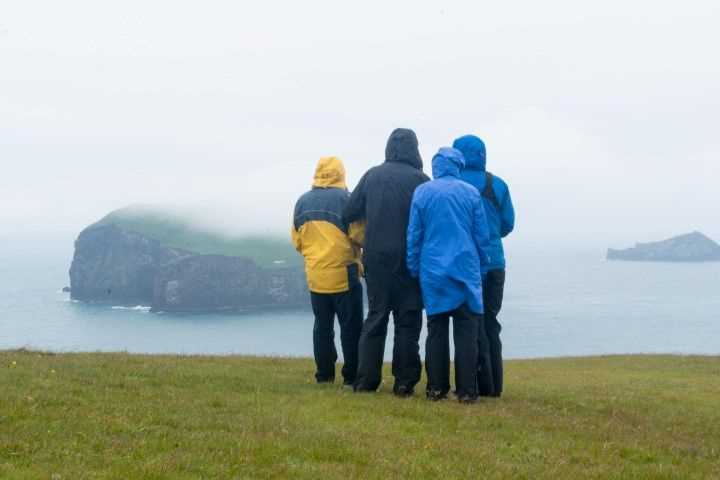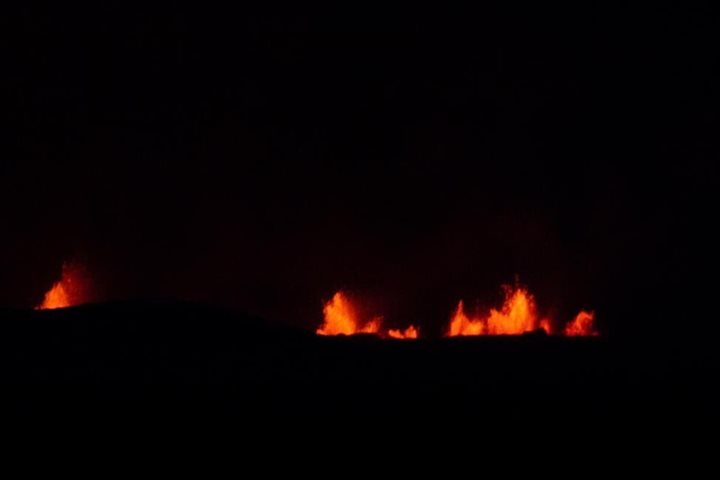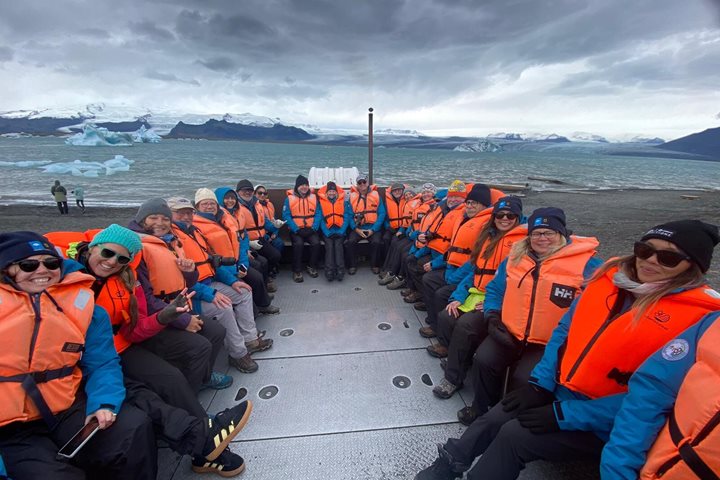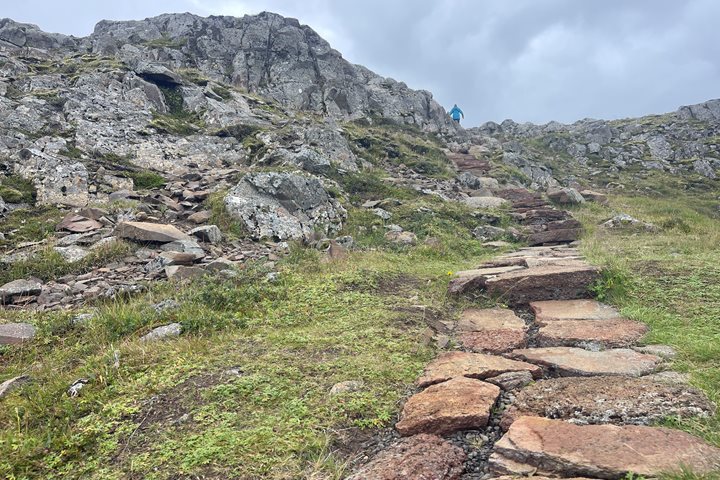We sailed through the night and morning to Heimaey, the only inhabited island in Vestmannaejar Archipelago, on the Westmann Islands. With the help of a local pilot we navigated through the narrow winding harbor entrance and pulled the ship alongside for our tours of the town. Heimaey is a beautiful island that almost lost its harbor when one of its mountains, Eldfell, erupted in 1973. The fast moving lava poured into the sea expanding the mass of the island. Much of the town was covered as well—it’s estimated 360 houses were covered in lava and tefra during the explosion and aftermath. Heimaey is rich in Viking and volcanic history, including a fascinating project called “The Pompeii of the North”, which entails the excavation of a few houses that were covered, resulting in the very fascinating Eldheimar Museum build around one of the excavated homes. The island had a wonderfully gloomy feel because of the low cloud cover and light rain throughout the day, making the hike especially interesting as they ascended Eldfell into the clouds. Our afternoon concluded with a sail past Surtsey, Iceland’s newest island, which appeared out of the ocean during a 1963 underwater eruption. The eruption lasted for four years and is a wonderful research location for volcanists, botanists, and biologists studying the formation of land and succession of life on a brand new island unaltered by humans.
8/23/2024
Read
National Geographic Explorer
Reykjavík, Iceland
After a cracking morning out at sea with some truly impressive waves, we were called up to the lounge by Expedition Leader Leah Eaton, who briefed us on a volcanic eruption that had just started on the Reykjanes peninsula. As the briefing concluded, we could already see the volcanic plume through which we would later sail on our way around the Reykjanes peninsula. We finally reached Reykjavík in the afternoon, where we had our final lounge briefing with our guest slideshow, a presentation on our final volcano plan, and a farewell speech from Captain Peik Aalto. After an early dinner, we mounted a trio of busses that carried us out onto the Reykjanes peninsula to an abandoned airstrip. From there we could already see the spectacular eruption very clearly, but to get a better look, we made our way onto some of the old storage bunkers which lined the airstrip. This gave us a view of the eruption in all its glory, with smoke billowing into the sky from the two-kilometer-long fissure, and also a number of smaller fires. It was a truly wonderous ending to an already incredible expedition.







